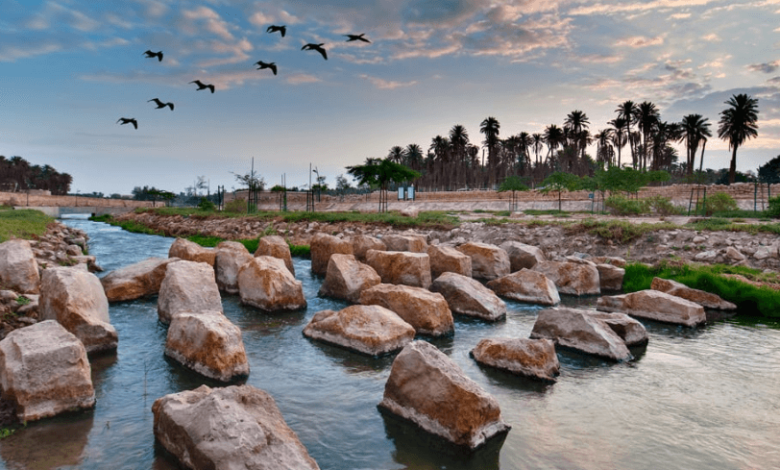Riyadh’s Hidden Gems

Riyadh, the capital city of Saudi Arabia, stands as a remarkable intersection of tradition and modernity within the heart of the Arabian Peninsula. Known for its striking skyline dominated by contemporary architectural marvels such as the Kingdom Centre and the Al Faisaliyah Center, Riyadh seamlessly blends its rich cultural heritage with cutting-edge development. The city’s history dates back to the 18th century, and its growth has been significantly influenced by its strategic location as a political, economic, and administrative hub for the Kingdom. As the largest city in Saudi Arabia, Riyadh is a vibrant center for business and commerce, drawing both local and international investments, which contributes to its rapid expansion and increasing prominence on the global stage.
In this thriving metropolis, travel and connectivity play a crucial role in fostering international business and tourism. As a gateway to the Middle East, Riyadh welcomes visitors from all corners of the world, making air travel an essential component of its infrastructure. Among the airlines facilitating this connectivity, Cathay Pacific provides flight services from Los Angeles To Riyadh ensuring that travelers can seamlessly access Riyadh from major global destinations. With its diverse dining options, intriguing museums, and bustling markets, Riyadh offers a wealth of experiences for visitors while continuing to evolve as a leading urban center in the region. The city’s commitment to cultural initiatives and modernization highlights its role as a key player in the ongoing transformation of Saudi Arabia, paving the way for a vibrant future that honors its storied past.
King Abdullah Park
King Abdullah Park, located in the heart of Riyadh, is a stunning urban retreat that offers a combination of natural beauty, recreational activities, and cultural significance. For those planning a visit to this expansive park, a few tips can help enhance your experience and ensure you make the most of your time.
First and foremost, consider the timing of your visit. The park can be particularly crowded on weekends and public holidays, so visiting during weekdays may provide a more peaceful experience. Early mornings or late afternoons are also ideal, as the temperatures are cooler and the lighting for photographs is excellent. Arriving close to sunset not only offers a beautiful view but also allows you to experience the park’s illuminated fountains, which create a captivating atmosphere as dusk falls.
Next, make sure to wear comfortable clothing and footwear. King Abdullah Park spans a large area, and you will likely find yourself walking or jogging along its pathways. The well-maintained trails are perfect for leisurely strolls or energetic exercise, so come prepared to enjoy the outdoor environment. Also, don’t forget to bring essentials such as water and sunscreen, especially if you plan on spending several hours exploring.
Lastly, take advantage of the park’s diverse amenities. With plenty of play areas for children, a scenic lake, and beautifully landscaped gardens, there’s something for everyone. Be sure to allocate time to relax on the grassy lawns with a picnic or check out the art installations scattered throughout the park. If you are interested in local culture, pay attention to any events or festivals that might be taking place during your visit, as these can provide an enriching experience that highlights the community’s culture and traditions.
See also: Why Choose a Smartwatch for Your Active Lifestyle?
King Abdullah Park
King Abdullah Park, located in the heart of Riyadh, is a stunning urban retreat that offers a combination of natural beauty, recreational activities, and cultural significance. For those planning a visit to this expansive park, a few tips can help enhance your experience and ensure you make the most of your time.
First and foremost, consider the timing of your visit. The park can be particularly crowded on weekends and public holidays, so visiting during weekdays may provide a more peaceful experience. Early mornings or late afternoons are also ideal, as the temperatures are cooler and the lighting for photographs is excellent. Arriving close to sunset not only offers a beautiful view but also allows you to experience the park’s illuminated fountains, which create a captivating atmosphere as dusk falls.
Next, make sure to wear comfortable clothing and footwear. King Abdullah Park spans a large area, and you will likely find yourself walking or jogging along its pathways. The well-maintained trails are perfect for leisurely strolls or energetic exercise, so come prepared to enjoy the outdoor environment. Also, don’t forget to bring essentials such as water and sunscreen, especially if you plan on spending several hours exploring.
Lastly, take advantage of the park’s diverse amenities. With plenty of play areas for children, a scenic lake, and beautifully landscaped gardens, there’s something for everyone. Be sure to allocate time to relax on the grassy lawns with a picnic or check out the art installations scattered throughout the park. If you are interested in local culture, pay attention to any events or festivals that might be taking place during your visit, as these can provide an enriching experience that highlights the community’s culture and traditions.
National Museum of Saudi Arabia
The National Museum of Saudi Arabia, nestled in the heart of Riyadh, stands as a monumental celebration of the kingdom’s rich history, culture, and heritage. Opened in 1999, this striking architectural marvel is part of the King Abdulaziz Historical Center, symbolizing the intricate tapestry of narratives that shape the Saudi identity. Visitors are drawn to its unique blend of modern design and traditional motifs, finding themselves captivated by the museum’s exterior, which reflects the natural beauty of the Arabian landscape.
Inside, the exhibits unfold like a well-crafted storybook, taking guests on a journey through time. Spanning from prehistoric eras to the contemporary age, the museum houses an impressive collection of artifacts, manuscripts, and artworks that provide insight into the Arabian Peninsula’s diverse civilizations. The eight permanent halls cover themes such as geology, archaeology, and the evolution of Islam, allowing visitors to immerse themselves in the profound legacies and cultural exchanges that have defined the region. The meticulous curation highlights not just Saudi history but also the broader narrative of human development.
As part of its mission to educate and inspire, the National Museum of Saudi Arabia offers a variety of engaging programs and activities for both locals and tourists. Workshops, lectures, and guided tours are designed to enhance understanding and appreciation of the museum’s treasures, while temporary exhibitions showcase contemporary Saudi artists, bridging the gap between past and present. This dynamic approach fosters dialogue and reflection, encouraging visitors to explore their connections to the region’s history.
The museum’s commitment to cultural outreach is further exemplified by its family-friendly spaces and interactive displays, making it a destination for all ages. Whether you’re a history enthusiast or a casual visitor, the National Museum of Saudi Arabia promises an enriching experience that leaves a lasting impression. It stands not just as a repository of artifacts, but as a beacon of knowledge and a testament to the enduring spirit of a nation discovering its place in a rapidly evolving world.




